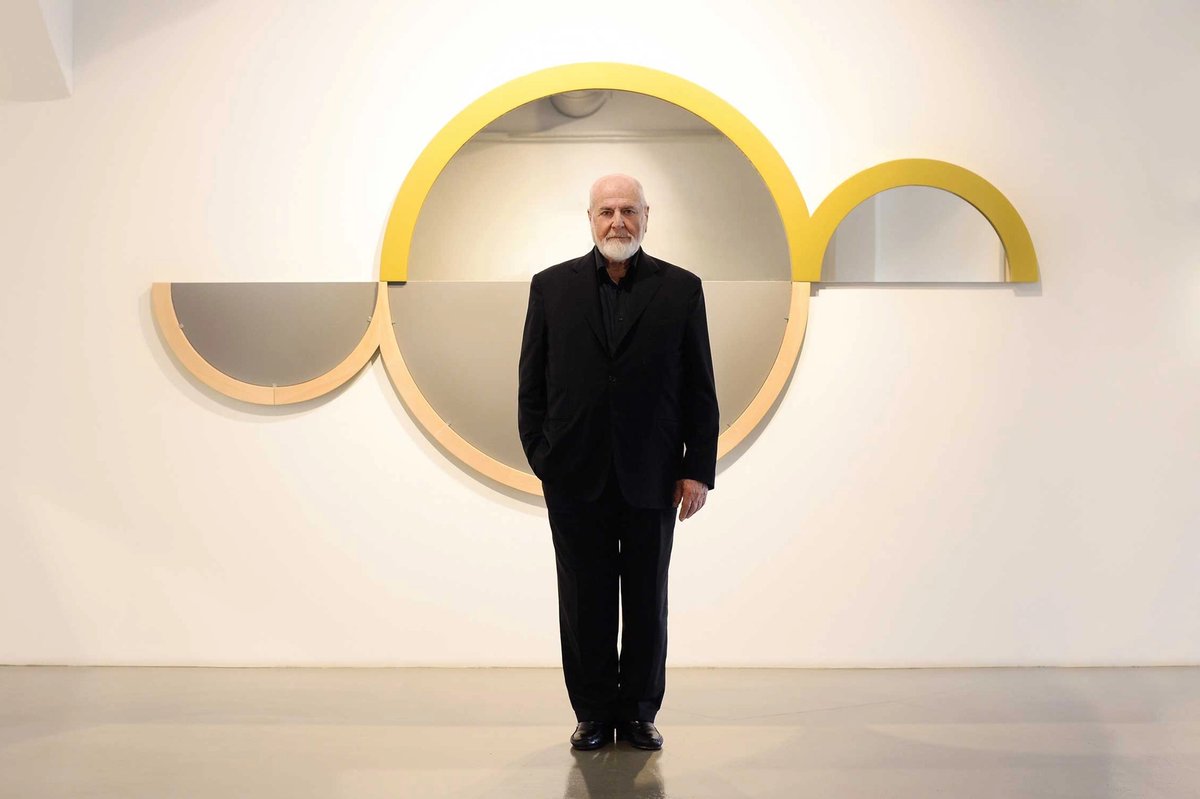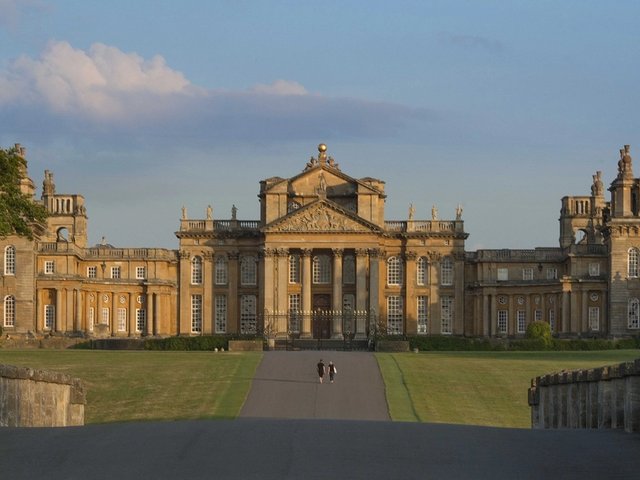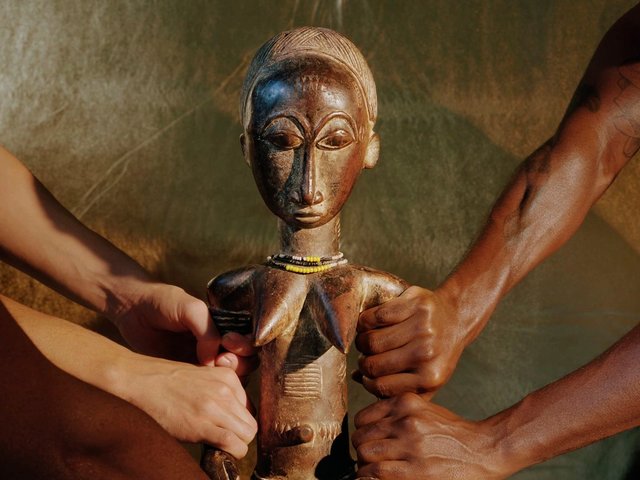The Italian artist and Arte Povera pioneer Michelangelo Pistoletto takes on Pablo Picasso in his latest exhibition at Helly Nahmad Gallery in London this week. The 92-year-old artist is showing new works from his Mirror Paintings series in dialogue with the Cubist works of Picasso—such as Partition, Guitare, Compotier (1924)—and reflecting “how their revolutionary practices redefined perspective”, according to the gallery.
Pistoletto’s pairing with Picasso is the latest in a long line of artistic innovations. He first presented his trademark Mirror Paintings (Quadri specchianti) in 1963 at Turin’s Galleria Galatea, stressing later that his work stems from the mirror and “the idea that it reflects society and reality”. In 1998 the artist opened Cittadellarte: Fondazione Pistoletto in Biella, his hometown in northern Italy, which is described as a “cultural factory” dedicated to multidisciplinary activities and enhancing “civilisation through art”. Pistoletto discusses why he is now looking to Picasso, life post-Covid and what being nominated for the Nobel Peace Prize means.
The Art Newspaper: Why focus on Picasso at this stage of your artistic career?
Michelangelo Pistoletto: In the past, the artist’s task was to reproduce reality in images. With the discovery of scientific progress at the end of the 19th century, photography replaced the artist’s profession and caused a crisis in the entire concept of art. With Modern art, the artist achieved complete autonomy, bringing [their] personal mark to maximum independence. The path of [the 15th-century Italian artist] Piero della Francesca, who had initiated scientific perspective in art, was completely overthrown in the early 20th century by artists like Pablo Picasso, who totally shattered the image of reality, creating a continuous reinterpretation, unique and different.
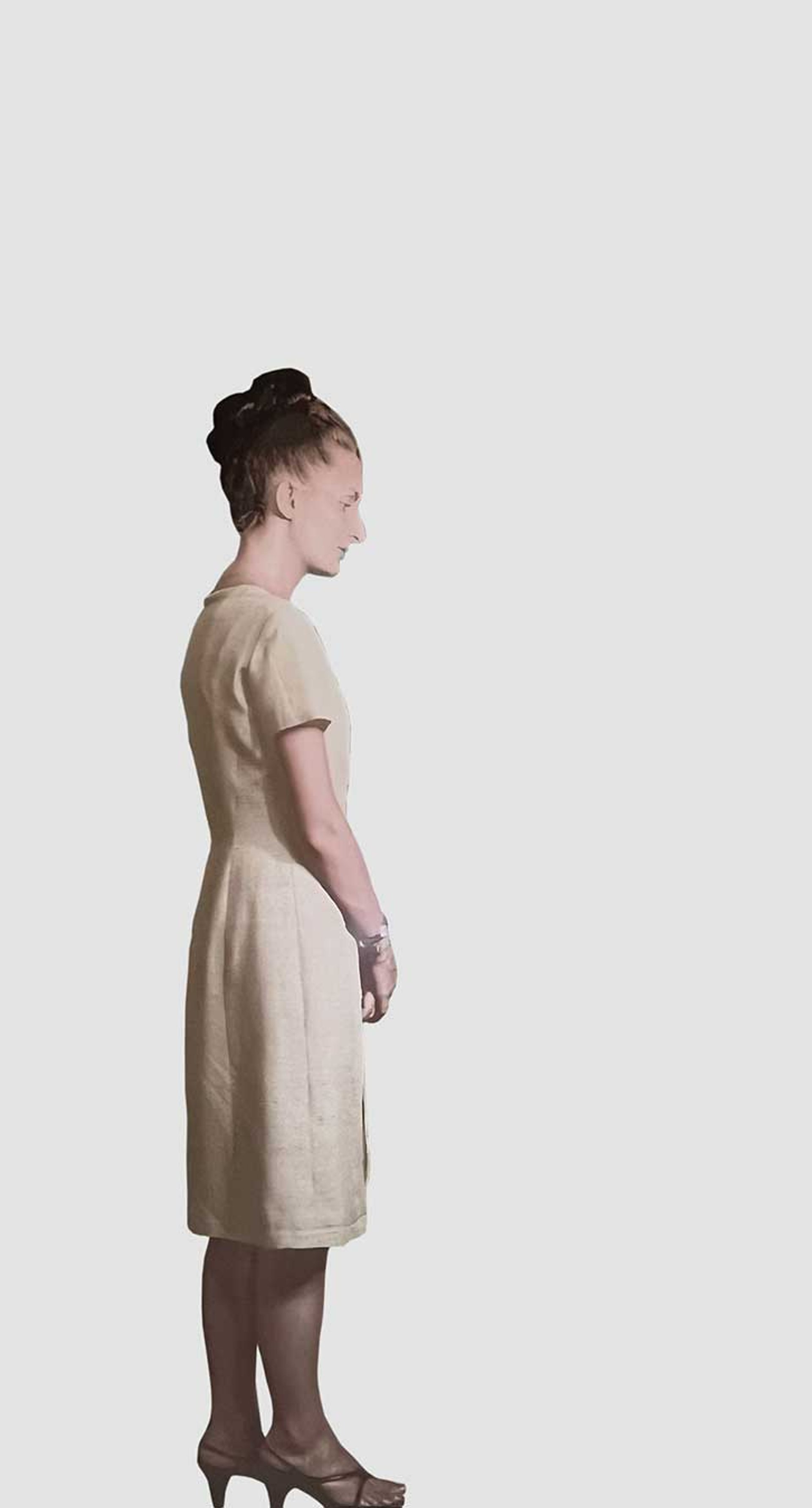
A new work from Pistoletto’s Mirror Paintings series, Donna in Piedi (2025)
© the artist
How does Picasso link to your Mirror Paintings?
Picasso created the Cubist movement. Thus, the great “White Cube” of modernity was born in the multiplicity of different expressions and “isms”, and all artistic movements were formed within it. Only the Futurists participated in the progressive flow of science and technology, passing through the entire Picassian cube. [The Futurist artist] Giacomo Balla, with Dynamism of a Dog on a Leash from 1912, gave a technological sense to the image, describing cinematographic movement in the work. In the 1950s and 1960s, Lucio Fontana punctured and slashed the canvas of the painting, seeking to go beyond the “white cube” of modernity to conquer a new space beyond the walls that had closed off all artistic perspective regarding the common life of society.
With the Mirror Painting of 1961, I broke down the wall and opened the perspective to 360 degrees, involving all of humanity in the mirroring work of art, and simultaneously involving all that exists in the space and time of the universe. The mirroring canvas brought the fourth dimension, which is space-time, directly into the painting. By creating the work, I photographically stop an instant and fix it on the mirroring surface, so this image becomes a memory that will participate in every future instant reflected.
The Mirror Paintings are phenomenological and focus on the universal understanding of existence. Every human person is always included in these works and becomes the centre of a circular perspective, no longer just unidirectional, like those [works] that came from the Renaissance of Piero della Francesca before Cubism. Picasso is important to me because he gives historical significance to my work; he marks the crisis of art that occurred with the advent of photography.
Can you explain your “Third Paradise” philosophy, which underpins all your work?
The mind is in a perpetual dynamic state of ideas and activity. Art is not a natural thing, but the virtual dynamic of the human brain, which is used in every area of society. We cannot escape the fact that every human being is creative and that creativity makes us autonomous and responsible in the world.
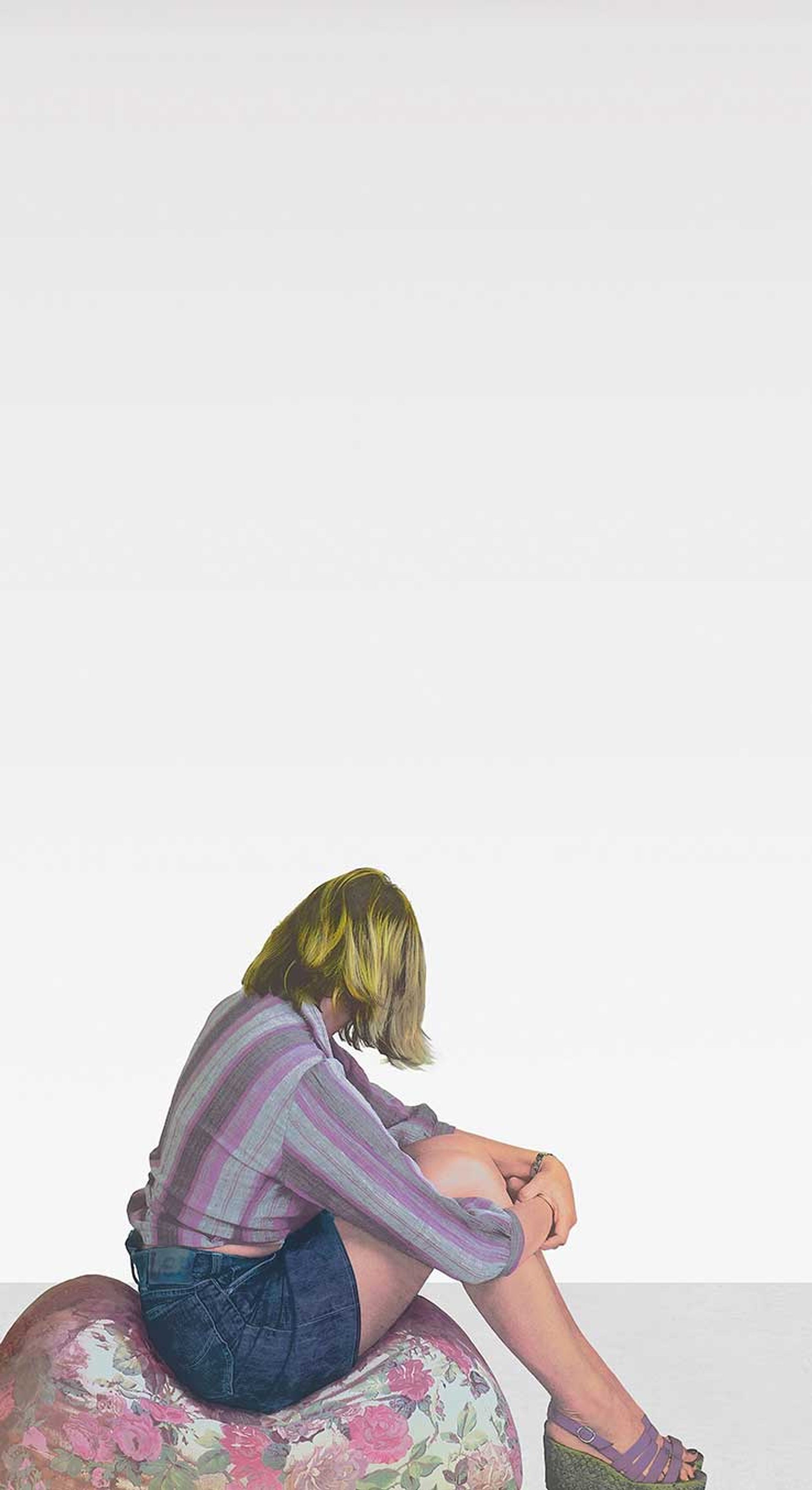
Pistoletto’s Ragazza Seduta (2025), in the recently opened exhibition in London
© the artist
The formula of the Third Paradise is composed of three circles: the two outer circles represent the opposites. At the centre there is an empty circle that is never truly empty, because there we are always confronted with opposing forces such as, for example, war and peace. The central circle is the place where the opposing elements connect and generate a new element. This is creation.
We are free to create war or peace. It is up to us to decide. The Third Paradise is contained in the Formula of Creation, which corresponds to the phenomenology of universal life. God was created by human beings; our minds formed societies united in the name of God, a god conceived by the human being as a necessary agreement to achieve the breadth and depth of society. We all have the responsibility to participate actively and knowingly in religion, politics and economics.
You were seriously ill with Covid-19 in 2020. Did this change your outlook?
Covid-19 has not changed my feelings and thinking. When I was sick in the hospital, it was a moment when everyone was pushed out of the central circle of the Third Paradise, which had truly remained empty because people could not meet. But after the end of Covid-19, people went crazy. Everyone wanted to find each other, to be together, taking the train, the plane, running as fast as possible. The opposite of life, blocked by Covid, occurred; that is why we must reorganise society, using the Trinamic Formula that leads us to the Third Paradise of the planetary community.
Should we be concerned or excited by Artificial Intelligence?
Artificial intelligence is the great brain of humanity, with which we can all [enter into] dialogue [with]. But, as we see, we must not fear that this artificial system will lead to the destruction of the human; we are already devouring humanity even without this technology. However, we know that as this technology advances, it offers us the possibility of developing a human intelligence capable of creating a preventive peace that overthrows the predatory system that leads to war, helping us create the Third Paradise.
Were you honoured to be nominated for this year’s Nobel Peace Prize (put forward by the Gorbachev Foundation as an example of the “power of creativity in fostering global harmony”)?
This candidacy is not for me, it is for humanity. Finally, it is being recognised that a practical programme exists [regarding] art that can contribute to systematically producing and achieving peace. This can be a great step for society.
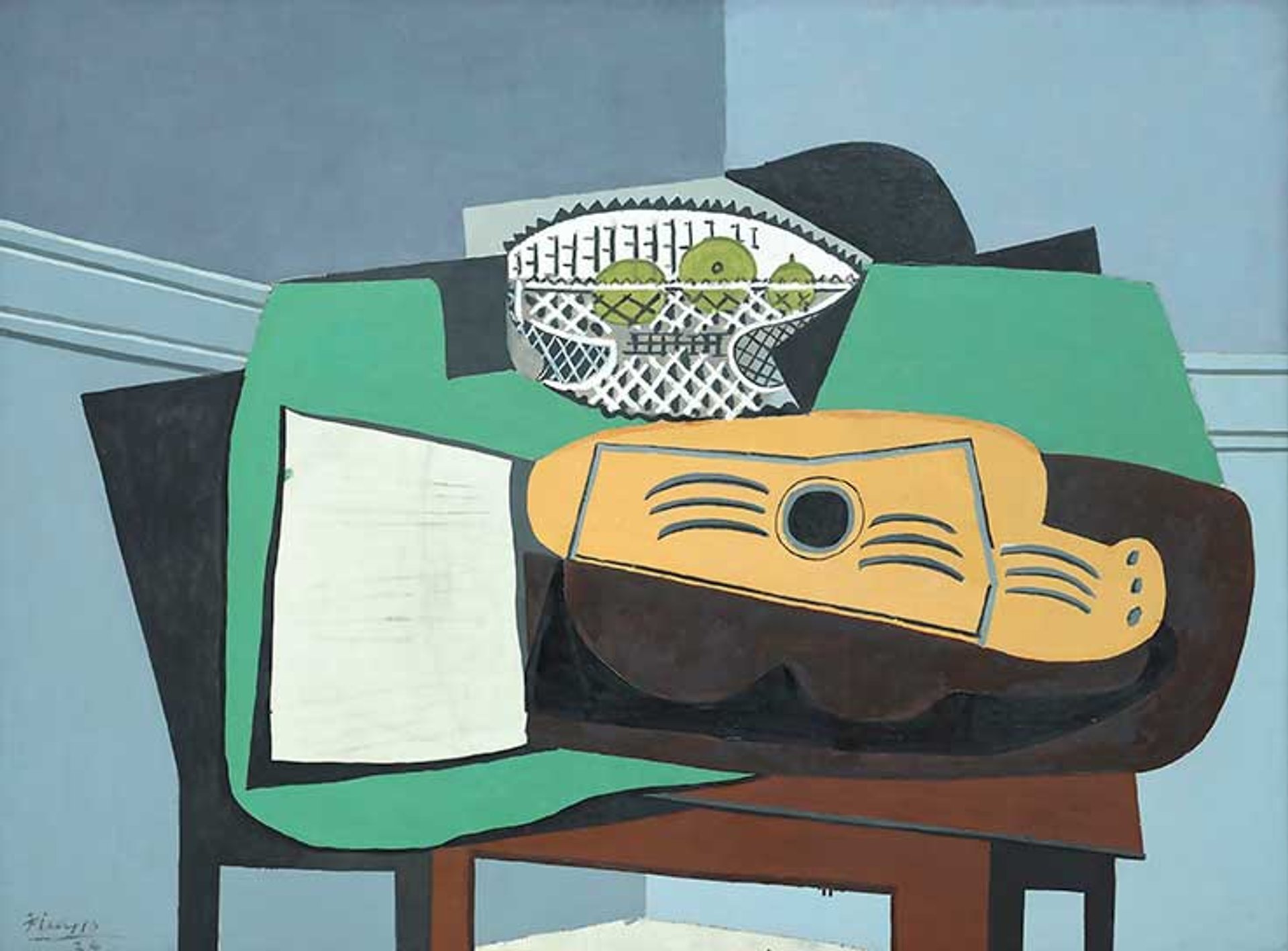
Picasso’s Partition, Guitare, Compotier (1924), in the current exhibition
© Succession Picasso
A version of your The Venus of the Rags (La Venere degli Stracci) sculpture on show in Naples was destroyed in a suspected arson attack in 2023. Will it be rebuilt?
The Venus of the Rags, reborn from the fire, will be permanently exhibited in the Church of San Severo al Pendino in Naples. The rags represent the degradation of society. The Venus, on the contrary, represents the continuous birth and rebirth of human beings throughout time. The word venere (venus) gives rise to venerability, and to venerate gives spiritual meaning to thought and action. Here the Venus embraces the rags to regenerate them into beauty, harmony and peace.
What is your next project?
We are launching an exhibition of my spiritual works in Monza, entitled UR–RA Unity of Religions—Responsibility of Art for a Preventive Peace, which concerns the power of art as a tool for peace. Religion and spirituality are a constant and continuous activity in my work. The exhibition, which will include works starting from the 1950s, is precisely about my connection with spirituality.
• Picasso/Pistoletto, Helly Nahmad Gallery, 2 Cork Street, London, until 12 December


